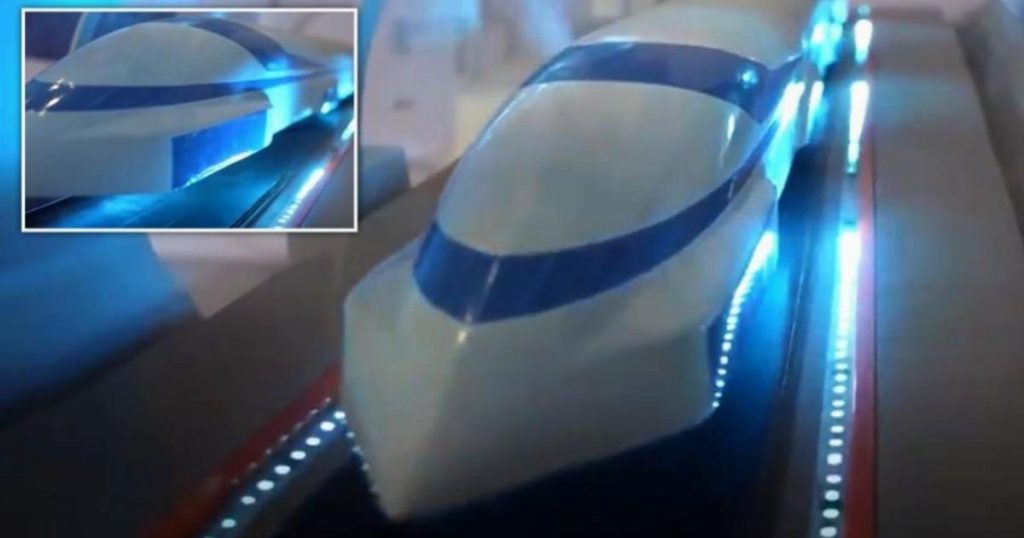China is at the forefront of developing a revolutionary high-speed magnetic levitation (maglev) train, potentially achieving speeds of up to 621 mph (1000 km/h), exceeding the cruising speed of commercial airplanes. This ambitious project aims to create the world’s first functioning hyperloop train within the next decade. Utilizing existing maglev technology, which allows trains to float above the tracks, the project seeks to drastically reduce travel times across the vast nation. China already operates two middle-to-low-speed maglev lines – the Changsha maglev and the Shanghai maglev, the latter being the current world record holder for fastest operating train at 268 mph (431 km/h). This new high-speed initiative represents a significant leap forward, placing China at the cutting edge of transportation technology.
The envisioned high-speed maglev, often referred to as a hyperloop, would operate within a vacuum-like tube. This design minimizes air resistance and obstacles, enabling the unprecedented speeds. However, this futuristic technology presents various challenges. One notable issue is maintaining stable 5G mobile phone connectivity within the train. The high velocity of the train causes the signal to rapidly switch between base stations, resulting in dropped calls and disrupted internet access. Engineers are exploring solutions, including installing parallel cables within the tube to maintain a consistent signal. Another challenge is the enormous cost and logistical complexity of constructing entirely new infrastructure, as the hyperloop cannot utilize existing railway lines.
Despite these hurdles, several Chinese cities are vying for the opportunity to host the first commercial vacuum tube maglev line. Potential routes include Beijing-Shijiazhuang and Guangzhou-Shenzhen, with the goal of commencing operations by 2035. This ambitious timeline underscores China’s commitment to leading the development and implementation of this transformative technology. While other countries, including the US, have explored hyperloop concepts, China’s dedicated investment and existing experience with maglev technology position it as the primary driver in bringing this vision to reality.
While China forges ahead with its high-speed hyperloop aspirations, it also continues to develop its existing maglev network. Construction is underway to extend the Changsha maglev line by 30 miles, connecting Changsha and Liuyang in Hunan province. This expansion, estimated to cost around $1.45 billion, will operate at a more conventional speed of 100 mph, demonstrating a commitment to both incremental improvements and revolutionary breakthroughs in maglev technology. This parallel development approach highlights China’s comprehensive strategy for modernizing its transportation infrastructure.
The concept of a hyperloop, though promising, faces significant skepticism. Critics point to the exorbitant costs, the need for completely new infrastructure, and the technical challenges as reasons for doubt. The abandonment of hyperloop projects by prominent figures like Elon Musk further fuels this skepticism. While some private companies continue to conduct research and testing, the large-scale implementation of hyperloop technology remains uncertain. China’s unwavering commitment, backed by substantial financial and technological resources, sets it apart in the pursuit of this ambitious goal.
Despite the doubters, China’s relentless pursuit of high-speed maglev technology represents a significant leap in transportation innovation. The potential benefits of dramatically reduced travel times, coupled with the reduced environmental impact compared to air travel, are compelling incentives. As China continues to push the boundaries of maglev technology, the world will be watching closely to see if this futuristic vision can overcome its challenges and transform the future of high-speed travel. The coming decade will be crucial in determining whether the hyperloop transitions from a futuristic concept to a tangible reality.




